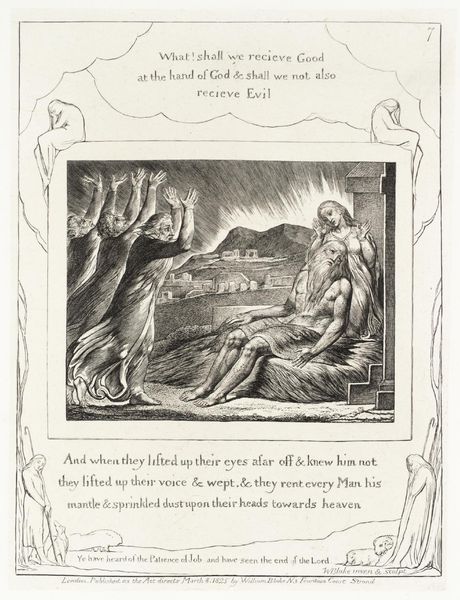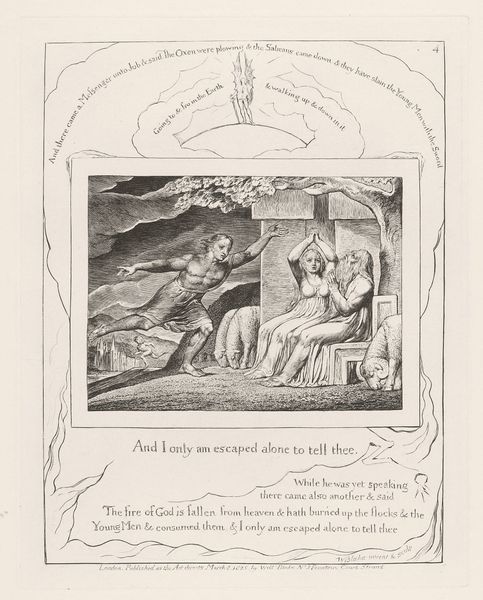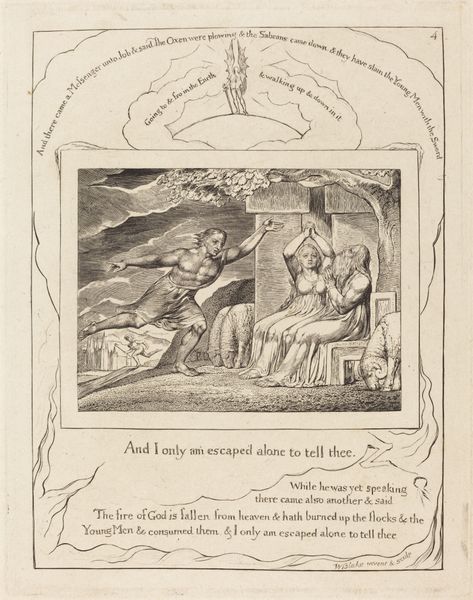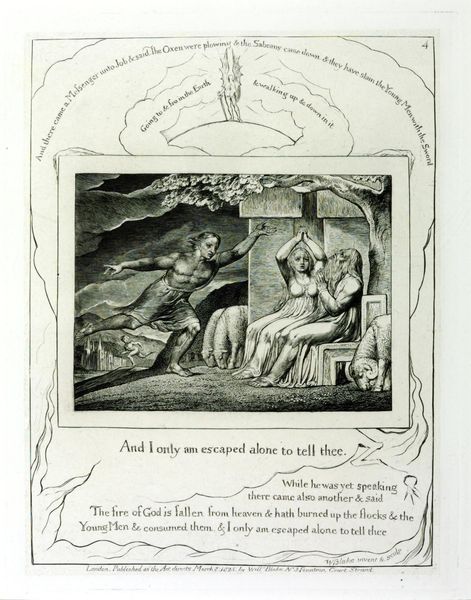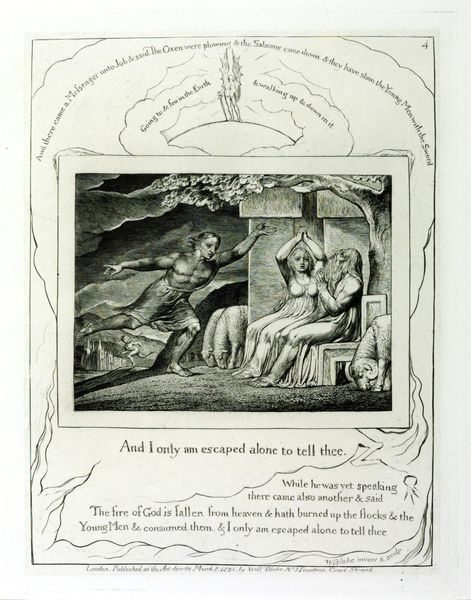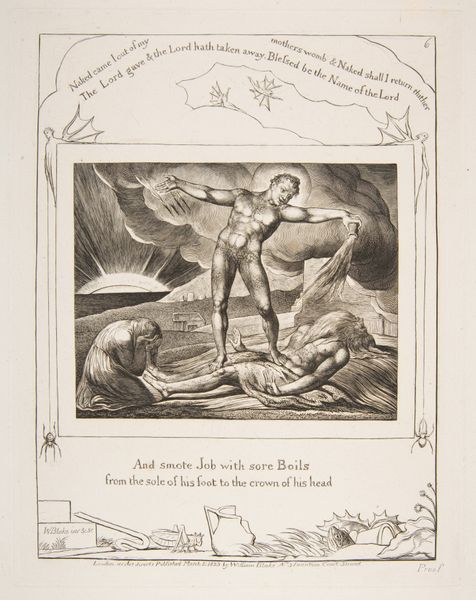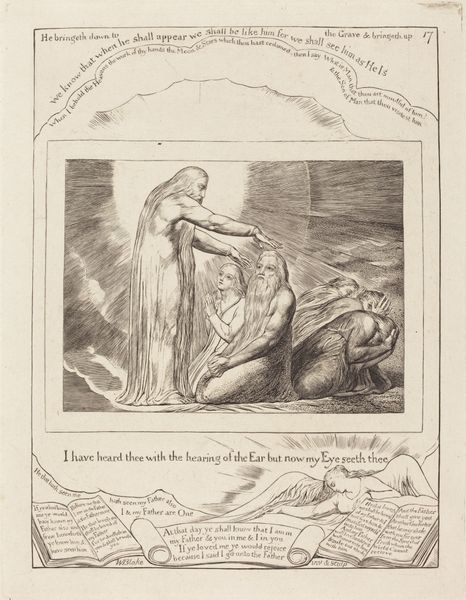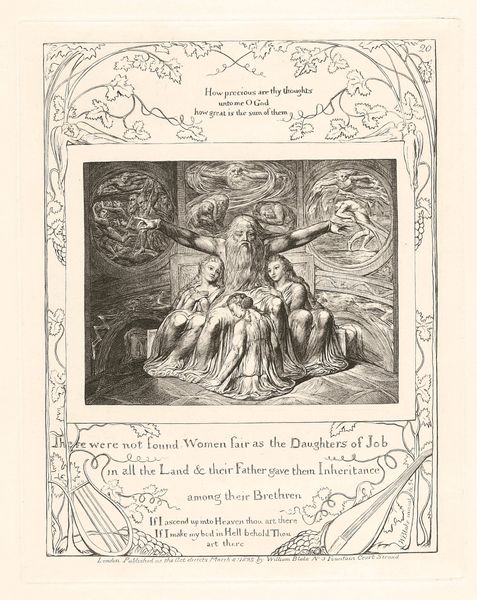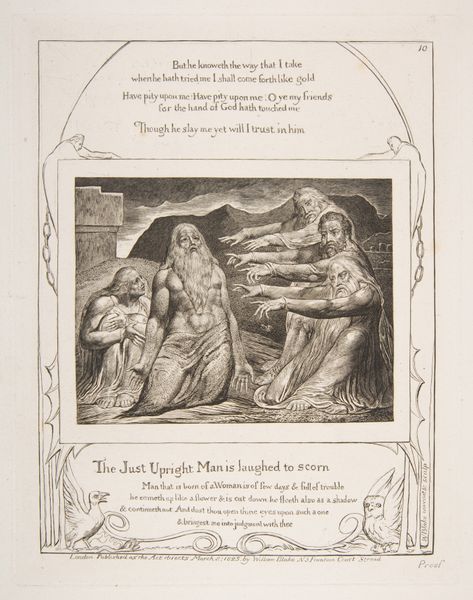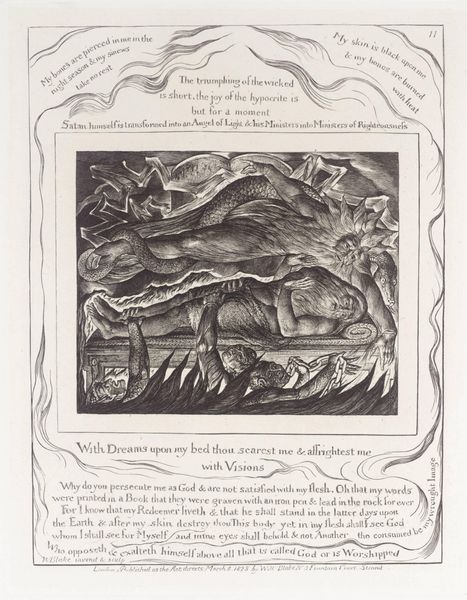
drawing, print, engraving
#
drawing
#
narrative-art
# print
#
figuration
#
romanticism
#
line
#
history-painting
#
engraving
Dimensions: plate: 8 9/16 x 6 7/8 in. (21.7 x 17.5 cm) sheet: 16 1/2 x 11 in. (41.9 x 27.9 cm)
Copyright: Public Domain
Curator: Here we have William Blake’s engraving "Job's Comforters," created around 1825 or 1826. What strikes you first about it? Editor: The starkness, certainly. The lines are so precise, and yet the scene feels intensely raw and emotional. There’s a real weight to the composition. It feels almost sculptural, rendered with such linear clarity. Curator: Indeed. Blake uses line and shading masterfully to convey emotional and spiritual states. This work is part of a series illustrating the Book of Job, which raises fundamental questions about suffering, faith, and justice – concerns highly relevant across gender, racial and socio-economic stratifications, I think. How does it sit in our present day, reflecting current socio-political events? Editor: The act of creating the engraving itself, the labor-intensive process of carving the image into the metal plate, becomes part of the narrative, right? Job’s endurance is reflected in Blake's painstaking methods. I mean, think of the tools, the ink, the paper – all those elements carefully selected to convey meaning through production and social context. Curator: Absolutely. And look at the figures. Job, emaciated and seemingly lifeless, contrasts sharply with his "comforters" expressing themselves with grand gestures but are empty in their compassion. It suggests an exploration into institutional and societal performances. I feel we can read it against patriarchal paradigms even now. Editor: Agreed. The industrial process of producing this engraving speaks volumes, though. Printmaking made this image accessible to a broader audience. And by emphasizing the physical nature of the engraving, we understand the implications of accessibility: distribution, reception, class. This piece gives weight to examining how making shapes meaning. Curator: And let us remember the social framework, how these images, initially created for a privileged audience, also circulated within radical and dissenting communities questioning societal and religious orthodoxies, providing critical perspective shifts for viewers from all positions. The legacy still affects us today. Editor: So true. Reflecting on this piece, I am reminded about how both the act of creation and the distribution channels affect interpretations. The tension of human and industrial effort comes full circle. Curator: Thinking of its emotional rawness, tied as it is into history, I realise again Blake's sharp insight into our own potential responses in such tragic states and how compassion still needs to fight.
Comments
No comments
Be the first to comment and join the conversation on the ultimate creative platform.
